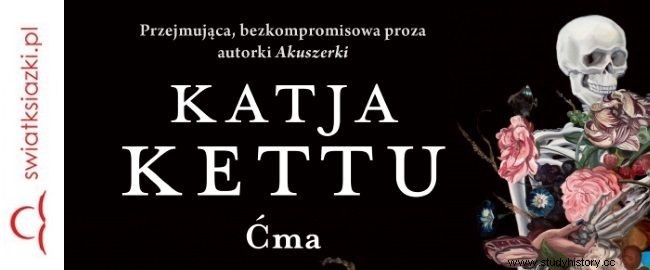The native religion is experiencing an unprecedented renaissance. However, there are few places where the faith of the ancestors has survived. And not only - it was reconstructed over time, in a doubtful way. According to many experts, this community is the last such example.
The inhabitants of Mari El, a small autonomous republic on the eastern tip of the European part of the Russian Federation, are said to be the last genuine pagans in Europe. According to a survey conducted in 2012, 6% of the country's population admits to professing their native religion. The percentage may not be very impressive - but it is certainly impressive that the beliefs of the Marians, formerly also known as Cheremis, have remained practically intact for millennia .
The locals still pray in the sacred groves, invoke the help of Kugu Jumo - the Great God, and offer sacrifices to him and other deities of animals, grain products, as well as honey, beer and vodka.
The rituals of a small Finno-Ugric community were described, among others, by Katja Kettu in the book "Moth". One of her characters, Elna, a contemporary resident of the Marian village of Ławra, tells about her prayer:
I pick up a bowl of overcooked barley. I slide my fingers into my mouth with a soft, warm-underneath goo and eat it. In my mind, I say spring words, words of thanks, and a general prayer. First I pray to Osh Kugu Jumo, then to Ketše Ava, Mother Sun, then to Tlze Ava, Mother Moon, Vyd Ava, Mother Water, the word-bearers, and to all the earthly white gods I remember.
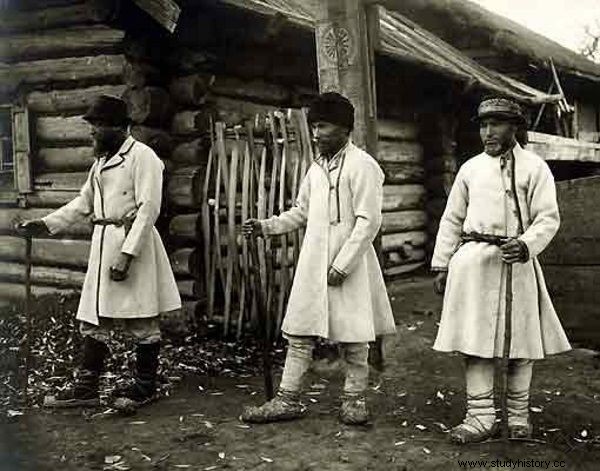
The beliefs of the Marian Fathers resisted the influences of both Christianity and communism. The photo shows Marian priests around 1930 (source:public domain).
At the same time, I slowly squash the lumps of overcooked barley with my toothless gums. It is important to eat whatever you have brought. Nothing should be left behind for no one to find out who brought the gifts.
Five hundred years in hiding
How did the Mari people resist Christianization, which, after all, covered all of Europe? Partly, as Professor Xenophon Sanukov, who studies their history, emphasizes, they owe it to Mari El's relative isolation. But for this small nation, faith has also become one of the main symbols of its own identity. The resistance to Christianity was at the same time resistance to the Russian sovereignty, which Cheremisi, previously practically independent (although they paid tribute to the Tatars), had to acknowledge already in the middle of the 16th century.
It must be admitted that the Christianization campaign led by the Russians was never particularly intense. The native faith in Mari El was not exterminated by fire and sword, as in the lands of Prussia, where crusades against pagans were also accompanied by colonization and resettlement actions. The Russians argued for baptism rather with ... tax breaks .
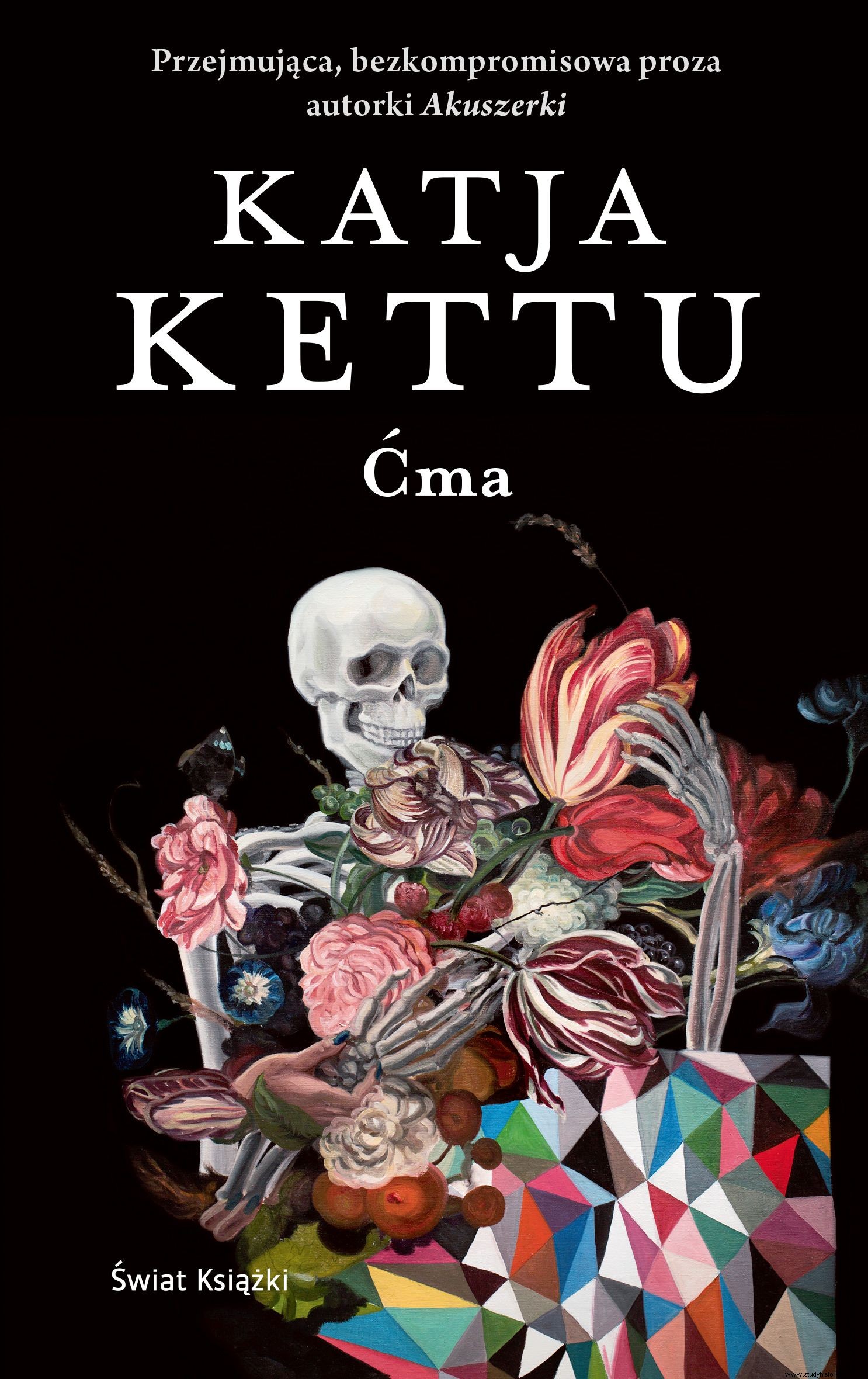
The article was based, among others, on the book by Katja Kettu "Ćma", which has just been published by the Świat Książki publishing house.
Christians' right not to pay taxes resulted in "tactical" conversions. And apparently, even if at the end of the 19th century, almost three-quarters of Marians belonged to the Russian Orthodox Church. They just drummed the weekly mass, and they still went to the woods to pray "really". If we stop going to the woods, all the people will die - they said.
For their part, efforts to convert the stubborn inhabitants of the Volga republic were also made by the Orthodox clergy. Prayers were said in a pagan manner. Attempts were also made to identify Christian figures with Marian idols and supernatural forces. All for nothing.
This is how the Cheremis survived until the 20th century. It was he who brought the smallest cultural losses to a small nation. In the 1930s, the Bolsheviks liquidated virtually an entire generation of Marian intelligentsia . It was a huge blow to the national identity and culture. The religion, which was supported by the people, also suffered. During the Great Patriotic War, the Russians cut down oaks and rowan trees for fuel in the village's new sacrificial grove - reports one of the protagonists of Katja Kettu's "Moths", Elna.

Marian native believers pray mainly among trees, in sacred groves. The photo shows an oak forest near the capital of the republic, Joszkar-Oły (photo:Badanovalexandr, license CC BY-SA 4.0).
The followers of the Kugu Jumo thus acted like all other believers, fought equally by the communists. They went underground and waited for better times. They returned as soon as the persecution ceased under Gorbachev's rule.
Pagans old and new
However, what is most surprising, the 1990s brought not only the revival of Mari El's native religion, but also ... the flourishing of pagan beliefs both in the Old Continent and in North America. The Marians may be the only ones whose native faith has been continuous for centuries. But they are certainly not alone in Europe.
Modern pagan researcher Michael F. Strmiska reports that in 2001 the number of Wicca believers, druids, and pagans in the United States alone was estimated at over 300,000. Paganism is recognized as one of the fastest growing religions there . For Europe, similar statistics are so far missing, but there is no doubt that representatives of individual groups are becoming more and more visible.
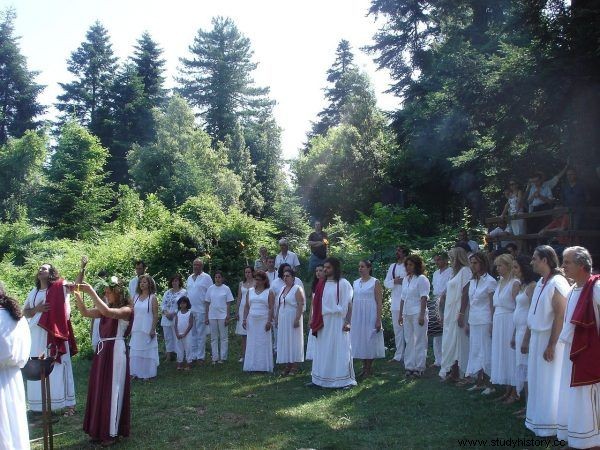
In recent decades, there has been a revival of interest in pre-Christian beliefs. The religion of ancient Greece was also revived. The photo shows one of the Hellenic rituals, 2007 (photo YSEE, license CC BY 2.0).
Some neo-paganism is based on universalist trends. These are, for example, Wiccans, pagans who resurrect witchcraft, druids and shamans that draw on various ancient inspirations. Others, on the other hand, reconstruct pre-Christian beliefs from the areas where they live as faithfully as possible.
They also include Polish native believers, appearing here and there since the times of Romanticism, but experiencing its heyday more or less since the 90s of the twentieth century. However, regardless of whether they are locally or globally oriented, they all emphasize their roots in tradition and cultural heritage. This is how, for example, members of the International Pagan Federation write about themselves:
Paganism is a spirituality that has its roots in ancient nature religions around the world. It is basically rooted in the old European religions, although some believers also value the indigenous beliefs of other countries. A similar faith in the sanctity of all things is found all over the world.

The article was based, among others, on the book by Katja Kettu "Ćma", which has just been published by the Świat Książki publishing house.
Pagans consider it their heritage, preserving the beliefs and values of their ancestors in a form adapted to the demands of modern life. They celebrate the sanctity of nature by worshiping the divine in everything; the great, unknowable spirit pervading the universe, the visible and the invisible.
Marys in the spotlight
No wonder that, against the backdrop of this pagan revival, the "genuine" pagans, or Marys, became particularly loud. The proof of the increased interest in a previously forgotten nation is the film "Heavenly Wives of Meadow Marys" directed by Alexei Fedorchenko. The comedy-drama by the Russian artist was even awarded the Grand Prix at the Nowe Horyzonty festival in Wrocław in 2013.
Galina Szkalina, a researcher of the Marian mentality and worldview, notes that there is a tendency to idealize the beliefs of the Cheremis. Religion, like their way of life, is presented not only as "true" and "original", but also as peaceful, non-conflicting, and in harmony with nature. Meanwhile, the truth is that Mari El's native beliefs have also evolved over the course of hundreds of years. The current recovery does not only mean the continuation of what was. It also houses Marian artists who develop the so-called "ethno-futurism".
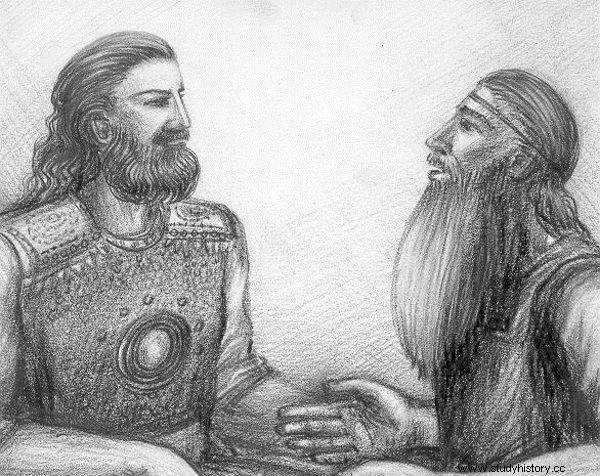
Certain elements of Marian beliefs have remained the same for millennia. The illustration shows a modern representation of the supreme god of Cheremis mythology, Kugu Jumo, with a Marian man (picture by Нуриев Рустам, source:public domain).
Where does this emphasis on authenticity come from? The revival of pagan beliefs, and with it the interest in a little more than half a million group of Marians, is one of the attempts by Europeans to find their own identity in a world where the existing certainties begin to waver.
Neopaganism, regardless of whether they pursue cosmopolitan or nationalist traditions, look for their roots. For them, as anthropologist Kathryn Rountree explains, it is part of the identity project and expression of values, part of creating a positive, empowering identity for themselves in a world as they understand and experience it.
Europeans, absorbed in finding new and new traditions for themselves, are the most fascinating residents of Mari El for one reason. The Marians don't have to invent anything.
Bibliography:
- Katja Kettu, Moth, World of Books 2017.
- International Pagan Federation, What is Paganism? , PaganFederation.org.]
- Wojciech Górecki, Children of God Kugu Jumo , "Tygiel Kultury" No. 7-9 (67-69) 2001.
- Thomas A. Sebeok, Frances J. Ingemann, Studies in Cheremis:The Supernatural , Wenner-Gren Foundation for Anthropological Research Inc. 1956.
- Ksenophont Sanukov, Stalinist Terror in the Mari Republic:The Attack on 'Finno-Ugrian Bourgeois Nationalism ’ , "The Slavonic and East European Review," Vol. 74, No. 4 (1996).
- Marceli Kosman, Perkun's twilight, or the last pagans on the Baltic Sea , Book and Knowledge 1981.
- Handbook of Contemporary Paganism, ed. Murphy Pizza, James R. Lewis, Brill 2009.
- Cosmopolitanism, Nationalism and Modern Paganism , ed. Kathryn Rountree, Palgrave Macmillan 2017.
- Modern Paganism in World Cultures. Comparative Perspectives, ed. Michael F. Strmiska, ABC Clio 2005.
- Johanna Laakso, Review:Mari und Mordwinen im heutigen Russland:Sprache, Kultur, Identität, Anthropological Linguistics, Vol. 49, No. 2 (2007).
Buy cheaper on Empik.com:
